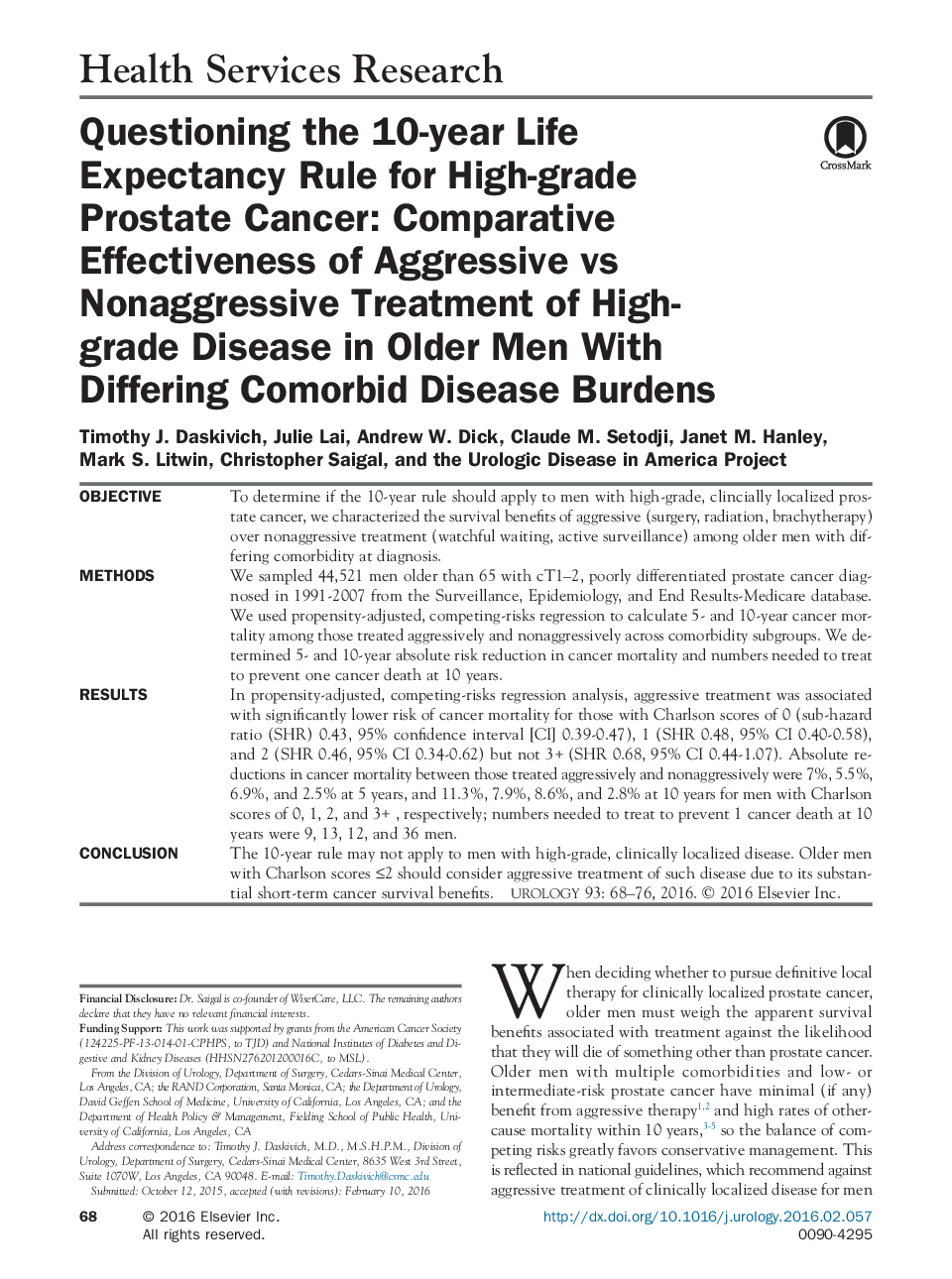| کد مقاله | کد نشریه | سال انتشار | مقاله انگلیسی | نسخه تمام متن |
|---|---|---|---|---|
| 6165386 | 1599259 | 2016 | 9 صفحه PDF | دانلود رایگان |
ObjectiveTo determine if the 10-year rule should apply to men with high-grade, clincially localized prostate cancer, we characterized the survival benefits of aggressive (surgery, radiation, brachytherapy) over nonaggressive treatment (watchful waiting, active surveillance) among older men with differing comorbidity at diagnosis.MethodsWe sampled 44,521 men older than 65 with cT1-2, poorly differentiated prostate cancer diagnosed in 1991-2007 from the Surveillance, Epidemiology, and End Results-Medicare database. We used propensity-adjusted, competing-risks regression to calculate 5- and 10-year cancer mortality among those treated aggressively and nonaggressively across comorbidity subgroups. We determined 5- and 10-year absolute risk reduction in cancer mortality and numbers needed to treat to prevent one cancer death at 10 years.ResultsIn propensity-adjusted, competing-risks regression analysis, aggressive treatment was associated with significantly lower risk of cancer mortality for those with Charlson scores of 0 (sub-hazard ratio (SHR) 0.43, 95% confidence interval [CI] 0.39-0.47), 1 (SHR 0.48, 95% CI 0.40-0.58), and 2 (SHR 0.46, 95% CI 0.34-0.62) but not 3+â(SHR 0.68, 95% CI 0.44-1.07). Absolute reductions in cancer mortality between those treated aggressively and nonaggressively were 7%, 5.5%, 6.9%, and 2.5% at 5 years, and 11.3%, 7.9%, 8.6%, and 2.8% at 10 years for men with Charlson scores of 0, 1, 2, and 3+â, respectively; numbers needed to treat to prevent 1 cancer death at 10 years were 9, 13, 12, and 36 men.ConclusionThe 10-year rule may not apply to men with high-grade, clinically localized disease. Older men with Charlson scores â¤2 should consider aggressive treatment of such disease due to its substantial short-term cancer survival benefits.
Journal: Urology - Volume 93, July 2016, Pages 68-76
